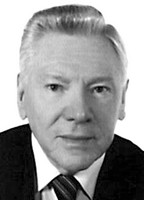Effects of hypoventilation breathing on physical working capacity and cardiorespiratory rates of under step exercises: comparative analysis
Фотографии:
ˑ:
Teoriya i praktika fizicheskoy kultury №8 2017, pp.31-33
Corresponding member of RAS, Dr.Biol., Professor N.A. Fudin1
PhD S.Ya. Klassina1
PhD S.N. Pigareva1
Dr,Med., Professor Y.E. Vagin2
1P.K. Anokhin Research Institute of Normal Physiology, Moscow
2I.M. Sechenov First Moscow State Medical University, Moscow
Objective of the study was to analyse effects of hypoventilation breathing on the physical working capacity and cardio-respiratory function rates under the 120W and 160W physical loads. Subject to the study were 14 junior volunteers who performed submaximal cycle ergometer exercise. The subjects were trained to apply hyperventilation breathing for 30 days. Prior to and after the training course the following test data were obtained: individual ECG and pneumograms; inspiration breath-holding times; and submaximal physical work times. The hypoventilation breathing skills were found to improve the hypoxic tolerance and physical working capacity rates of the subjects under both of the test loads. Submaximal level of load was normally reached immediately after passing the anaerobic threshold. It was demonstrated that the higher is the physical load intensity the shorter is the submaximal physical work. In contrast to the 120W physical load, the 160W load was associated with the higher excitation of the sinoatrial node on the ECG, slower intra- ventricle conductivity, higher levels of sympathetic effects on the heart; and a better oxygen supply to myocardium.
Keywords: sports, submaximal exercise, hypoventilation, physical working capacity, functional state.
References
- Murashko E.V. Standartnaya elektrokardiografiya v pediatricheskoy praktike [Standard electrocardiography in pediatric practice]. Lechashchiy vrach, 2005, no. 1, pp. 52-57.
- Sudakov K.V., Sinichkin V.V., Khasanov A.A Vegetativnye reaktsii cheloveka pri raznykh rezhimakh teplokholodovykh vozdeystviy v usloviyakh sauny [Human cold- and heat-defense autonomic responses in sauna conditions]. Fiziologiya cheloveka, 1987, vol. 13, no. 1, pp. 113–119.
- Fudin N.A., Klassina S.Y., Vagin Y.E. Gipoventilyatsionnoe dyihanie kak sredstvo povyisheniya fizicheskoy rabotosposobnosti cheloveka pri fizicheskoy rabote do otkaza [Effects of hypoventilation breathing on physical working capacity during exercise to failure]. Teoriya i praktika fiz. kultury, 2016, no. 12, pp. 55-57.
- Fudin N.A. Fiziologicheskaya tselesoobraznost proizvolnoy regulyatsii dykhaniya u sportsmenov [Physiological feasibility of voluntary regulation of breathing in athletes]. Teoriya i praktika fiz. kultury, 1983, no. 2, pp. 21-22.
- Yaremchuk E. Beg dlya vsekh. Dostupnaya programma trenirovok [Running for everyone. Accessible training program]. St. Petersburg: Piter, 2015, 230 p.
- Wasserman K., McIlroy M.B. Detecting the threshold of anaerobic metabolism in cardiac patients during exercise. Am J Cardiol. 1964; 14: 844–852.




 Журнал "THEORY AND PRACTICE
Журнал "THEORY AND PRACTICE